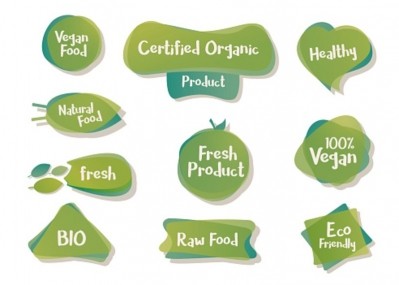Natural meat preservative: More research needed for wider application of lactic acid bacteria - Review

Microbial contamination and chemical deterioration of perishable foods like meats and meat products can lead to health risks among consumers and economic losses in the meat industry. To address these issues, LAB and their active metabolites, bacteriocins, can act as a natural alternative to antibiotics and chemical preservatives typically used in meat products.
For instance, purified or partially purified bacteriocins can be used as food additives, while bacteriocin-producing cells can be added as protective cultures to produce fermented meat products. In addition, live LAB strains can have anti-microbial properties, improve gut health, and result in desirable sensory changes in meat products.
However, due mainly to the narrow anti-microbial spectrum and variance in stability in different food matrixes, large-scale applications of LAB and bacteriocins have so far been limited. To solve this problem, bio-engineering and bio-technological techniques are used to combine two or more classes of bacteriocins to develop highly efficient novel bacteriocins.
This approach can enhance food safety, shelf life and sensory characteristics in meat products, as well as enhance shelf life. Based on this information, researchers in India and Spain conducted a review of the bio-synthesis of different classes of LAB bacteriocins, their mechanisms of action, and their role in preserving meat products.
Bacteriocin-aided bio-preservation
The review noted that the bio-preservation of meat products by bacteriocins is “a promising area, due to their high specificity towards multi-drug resistant pathogens”, meaning they could be used as an alternative to antibiotics.
They are also mostly heat-stable, colourless, odourless, stable across a wide pH range, and can be inactivated by proteolytic enzymes, leading to their use as biotechnological tool in the food and pharmaceutical industries.
Purified or partially purified bacteriocins have shown “strong bactericidal activity against major Gram-positive food pathogens”. For instance, the purified bacteriocin plantaricin, isolated from Indonesian beef and applied as a nitrite substitute, showed “positive results against E. coli in meatballs stored under refrigerated conditions for six days”, without altering its nutritional and physical changes.
Furthermore, the partially purified bacteriocin BacFL31, isolated from Enterococcus faecium, showed positive results against three species of disease-causing bacteria in ground turkey meat, and enhanced its shelf life to up to 14 days at 4°C.
More recently, novel bacteriocins have started to be purified and identified from different LAB to explore their bio-preservative potential in different food systems. This has led to researchers in Asia and Europe reporting bacteriocins’ inhibitive properties against major food pathogens in meat products, as well as their ability to enhance shelf life and maintain the appearance, pH and texture of meat samples.
Protection through fermentation
Globally, researchers have also been conducting experiments to isolate bacteriocins from meats and meat products. An Argentian study identified in different fermented sausages a bacteriocin that was heat-stable and had its production modified by different sodium chloride concentrations, while an Italian study isolated 115 meat-born LAB with anti-listerial properties.
These isolates showed bio-protective properties against disease-causing bacteria, and the review stated that “not only bacteriocins, but also live cultures, have bio-preservation properties by producing fermented meat products”.
While the efficacy of LAB and bacteriocins as preservatives and anti-microbial substances has been widely researcher and proven, their effects on consumers has not been well-documented. Of over 335 bacteriocins recorded on the Antimicrobial Peptide Database, only one (nisin) is approved for commercial use, and the “safe dose limit of anti-microbial substances is not recognised”.
However, a recent South African in-vitro study found that the bacteriocins nisin and plantaricin 423 were could have positive effects on human gut health. The review noted that in order to “protect the bacteriocins from degradation in the upper gastrointestinal tract, the encapsulation or incorporation of bacteriocins in starch-based matrices may help in overcoming such limitations”. It added that more studies were required to determine the “optimum concentration and dosage of bacteriocins required before the possible use of these peptides as an alternative to antibiotics / chemical preservatives in different matrices”.
Future research parameters
The review concluded that in the application of LAB and bacteriocins as meat preservatives, more analytical and advanced research was needed to overcome limiting factors like a narrow anti-microbial spectrum, higher production cost, low yield and higher dosage requirements.
It added that research should be aimed at developing cost-effective ways to optimise the production and purification of LAB and bacteriocins, and that all proposed additives should be “toxicologically tested (both-in vitro and in-vivo) and evaluated for their accumulative, synergistic and potential effects” before seeking regulatory approval.
Finally, the review stated that since LAB and bacteriocins were to be added to meat products for human consumption, it was “pertinent to study the absorption rate, distribution pattern and metabolic activities of these biological molecules” and to determine the best dosage. This would ensure that upon application, these additives would not alter the “physicochemical, nutritional values and sensory attributes inherent” to meat products.
Source: Microorganisms
https://doi.org/10.3390/microorganisms10102058
“Lactic Acid Bacteria and Bacteriocins: Novel Biotechnological Approach for Biopreservation of Meat and Meat Products”
Authors: Dipanwita Bhattacharya, et al.















